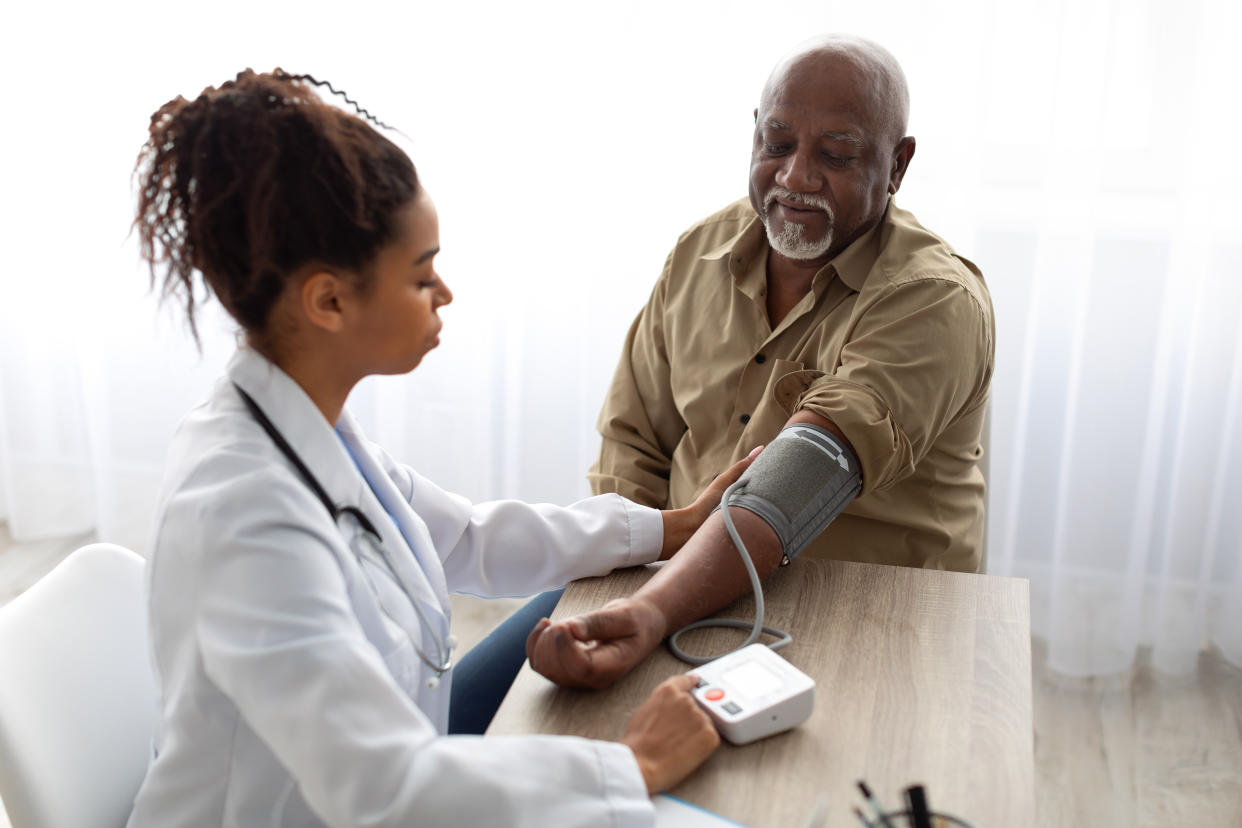At least 6 in 10 U.S. adults will have cardiovascular disease in the next 30 years, new study finds. Why are cases rising?

Cardiovascular disease is the leading cause of death for men and women in the U.S. — and new research suggests that more than half of the country will have some form of it in the near future.
The data, recently published in the journal Circulation, is part of two new presidential advisories from the American Heart Association. Based on data calculations, the researchers found that more than six in 10 American adults will have some type of cardiovascular disease within the next 30 years. High blood pressure — which is a major risk factor for heart attack and stroke — is the most likely condition people will develop, according to estimates.
Although high blood pressure will be common in those 80 years and older, the estimates show that the number of people with hypertension will be highest — and will continue to rise — in younger and middle-age adults 20 to 64 years old.
At the same time, the number of people who have strokes will nearly double from 10 million to almost 20 million adults.
“These are truly stunning numbers,” study co-author Dr. Dhruv Kazi, associate director of the Richard A. and Susan F. Smith Center for Outcomes Research in Cardiology and director of the cardiac critical care unit at Beth Israel Deaconess Medical Center in Boston, tells Yahoo Life.
But what’s behind this rise and, more important, what can you do to lower your risk? Cardiologists break it down.
Why are cardiovascular disease cases rising?
There are several reasons why these cases are increasing. One is that rates of obesity are increasing. In the next 30 years, obesity rates are expected to increase from 43.1% to 60.6% and affect more than 180 million Americans. At the same time, rates of diabetes will increase from 16.3% to 26.8%, and affect 80 million people. Both obesity and diabetes are major risk factors for developing cardiovascular disease, Kazi points out.
“There are also changing demographics in the U.S.,” Dr. Cheng-Han Chen, an interventional cardiologist and medical director of the Structural Heart Program at MemorialCare Saddleback Medical Center in Laguna Hills, Calif., tells Yahoo Life. Populations of Asian Americans, Hispanic Americans and Black Americans are growing, and “these groups seem to have higher rates of obesity and hypertension,” he says. Kazi agrees. “As we get more diverse — which is a great thing — one of the consequences we’re going to have to deal with is a greater risk and increase of cardiovascular disease,” he says.
At the same time, the overall national population is getting older. Millennials only recently overtook baby boomers as the largest generation in the U.S., but boomers still make up a significant portion of the country — and they’re now older adults, Kazi says. “As people get older, cardiovascular disease risk factors and conditions tend to rise,” he says.
But doctors say younger people are fueling this growth too. “We’re seeing a general rise in cardiovascular disease risk factors and disease in younger individuals, including increases in obesity and diabetes in adolescence,” Kazi says. “They will live with these risk factors and, in some cases, cardiovascular diseases for the rest of their lives.”
Chen agrees that behavioral factors in younger people are a significant factor. “A lot of this is being driven by younger patients not having good lifestyles,” he says.
So what can people do to reduce their risk?
Kazi says the data should be a wake-up call. “I cannot overstate how astounding these numbers are,” he says. “This is an opportunity for all of us to say, ‘What can I do to keep myself and my community healthier?’”
He recommends thinking about your own personal risk and whether certain factors like tobacco use, uncontrolled diabetes and uncontrolled blood pressure could be fueling it. “If those factors apply to you, engage with a primary care physician to take appropriate precautions,” he says.
However, cardiologists say that everyone can benefit from following the American Heart Association’s Life’s Essential 8. These factors are important for improving and maintaining your cardiovascular health, according to the AHA. They include:
Eating well. This means following a diet that includes whole foods, lots of fruits and vegetables, lean protein, nuts, seeds, and cooking in nontropical oils like olive and canola.
Exercising most days of the week. The AHA recommends getting at least 150 minutes of moderate to intense exercise per week.
Avoiding tobacco products. Don’t smoke or use other tobacco products. (Want to quit? Here’s how to boost your odds of stopping for good.)
Getting healthy sleep. Most adults should aim for seven to nine hours of sleep each night.
Trying to manage your weight. An optimal body mass index (BMI) is less than 25, but less than 18.5 is considered underweight. (Worth noting: BMI is considered an imperfect measure of health. If you’re concerned about your weight, it’s best to talk to a doctor for more.)
Controlling your cholesterol. The goal is to lower levels of non-HDL, or “bad,” cholesterol.
Managing your blood sugar. High levels of blood sugar can damage your heart, kidneys, eyes and nerves. Monitoring hemoglobin A1C can determine if people with diabetes or pre-diabetes have good blood sugar control.
Managing your blood pressure. Levels less than 120/80 mm Hg is ideal. High blood pressure is defined as 130 mm to 139 mm Hg systolic pressure (the top number) or 80 mm to 89 mm Hg diastolic pressure (the bottom number).
Chen urges people to be proactive about their cardiovascular health. “Despite decades of improvement in cardiovascular therapeutics and public health campaigns, we’re still trying to bend this growth curve of cardiovascular disease,” he says.


